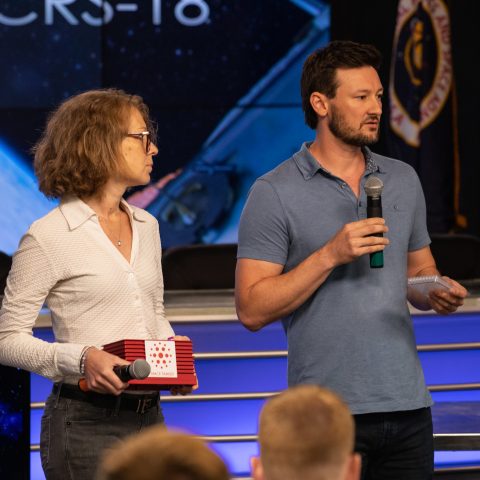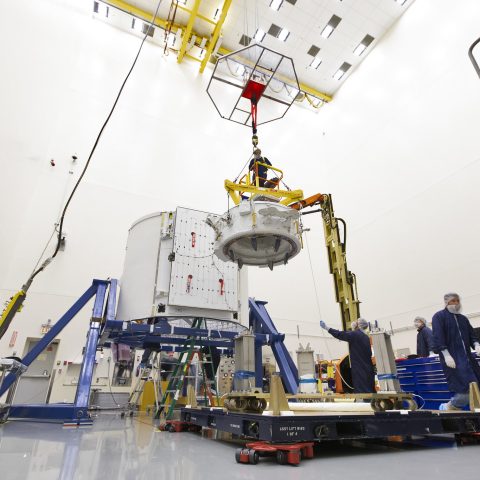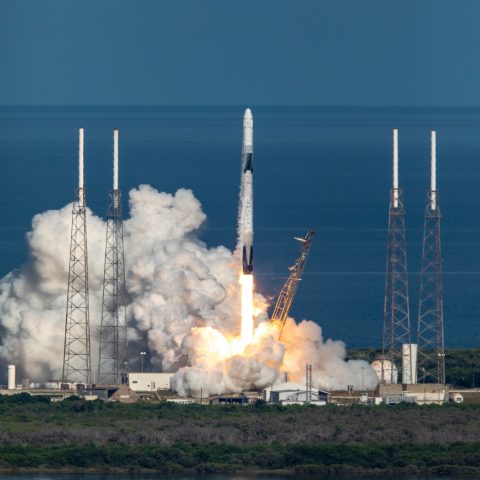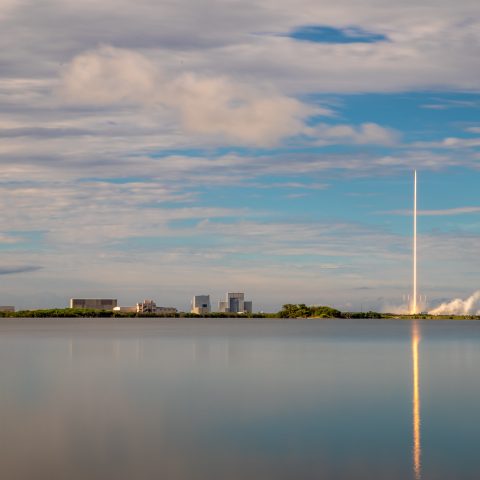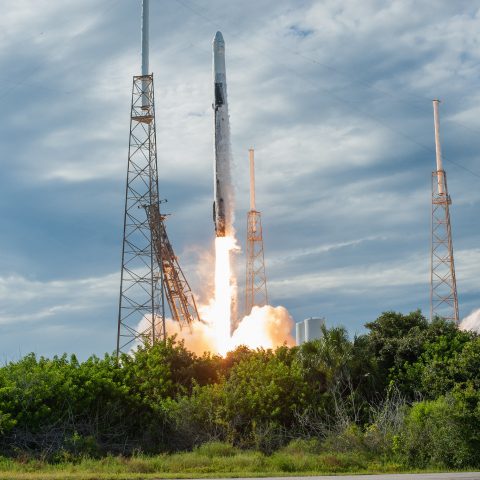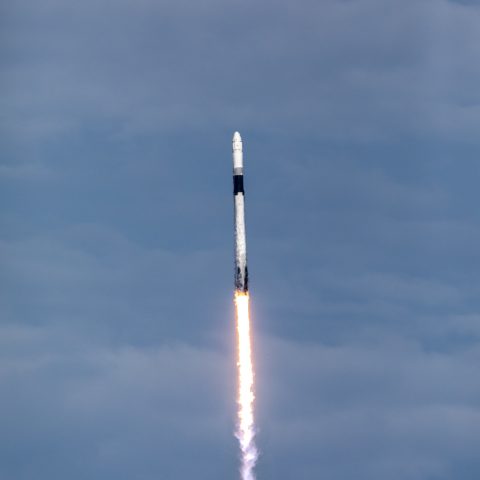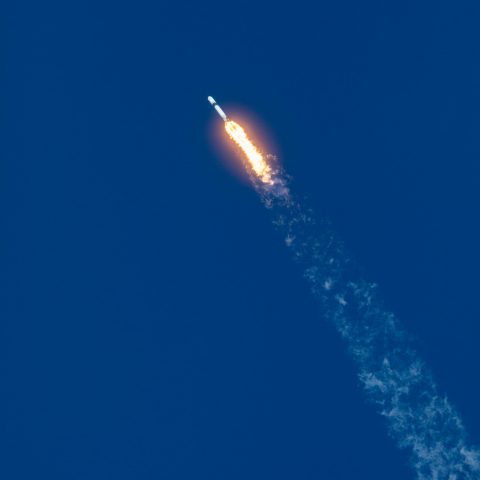Stem Cells Take to Space: NYSCF Collaboration Launches the First 3D Models of Parkinson’s Disease and Multiple Sclerosis to the International Space Station
NewsOn Thursday evening, SpaceX cargo flight CRS-18 took off from Cape Canaveral, bound for the International Space Station (ISS). Aboard for the 250-mile journey were brain cells derived by NYSCF scientists from patients with multiple sclerosis (MS) and Parkinson’s disease (PD). Studying these cells in microgravity on the ISS will help researchers uncover possible causes behind both diseases as well as illuminate how time spent in space could affect the cells of healthy astronauts.
This groundbreaking study, in which the first 3D models of PD and MS made from patient stem cells will be studied in microgravity, is led by NYSCF Senior Research Investigator Dr. Valentina Fossati and Aspen Neuroscience Vice President of Research and Development Dr. Andres Bratt-Leal in collaboration with scientists at Summit for Stem Cell, the National Stem Cell Foundation, and Space Tango.
“NYSCF is committed to pursuing the most inventive approaches to disease research,” says Susan L. Solomon, NYSCF CEO. “We are excited to combine our stem cell technology expertise with groundbreaking advancements in aerospace and biological engineering to further the understanding of diseases with a major unmet need.”
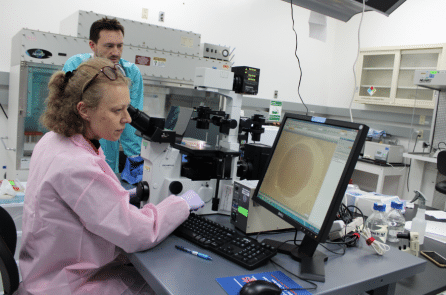
What inspired this study?
MS and PD are neurodegenerative diseases, but we still do not understand exactly what causes brain cells to start dying in each case. The immune system is thought to play a role in both diseases, and observing how the brain’s immune cells (called ‘microglia’) interact with other brain cells will help us better understand what triggers MS and PD.
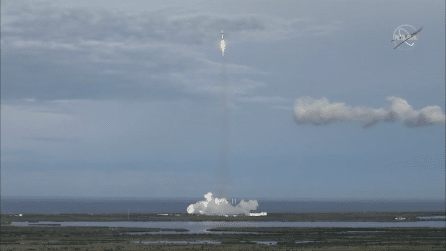
“Microglia are constantly scanning the brain for danger, and it’s starting to look like they overreact in neurodegenerative illnesses, contributing to the death of neurons,” explains Dr. Fossati. “Physical forces affect how these cells behave, and microgravity is a unique circumstance in which to tease apart these healthy and diseased behaviors.”
NASA is also interested in how living in space affects immune function. Studies of astronauts upon their return to Earth have suggested that the immune system may undergo changes in space, as evidenced by activation of certain dormant viruses once the astronauts have exited microgravity.
How can stem cells in microgravity help us understand MS and PD?
It has traditionally been hard to study MS and PD because mouse models do not recapitulate characteristics of the disease as it occurs in humans, and the human brain isn’t easy to access, limiting studies of human tissue.
With stem cells, however, researchers can make microglia and neurons in the lab — Dr. Fossati’s lab pioneered techniques for the former. Studying these cells reveals how they develop, dysfunction, and interact in 3D space. The ISS study involves brain cells derived from MS and PD patients as well as healthy controls.
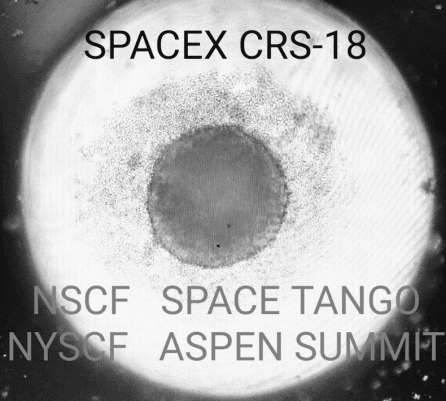
“We know that forces can influence the behavior of cells by changing aspects such as their shape. So, what happens when you remove gravity?” says Dr. Bratt-Leal. “How the cells respond will tell us new things about how they function.”
In particular, understanding exactly how microglia behavior and dysfunction is influenced by microgravity may shed light on how these cells work as they migrate throughout the brain and interact with neurons, and how these processes may go awry in disease. We will also gain a better understanding of how to best maintain and conduct tests on brain cells in microgravity, optimizing protocols for future flights.
How will stem cell experiments be carried out in space?
Once the cells reach ISS on Saturday, they will begin a 30-day stay during which Drs. Fossati’s and Brett-Leal’s teams will closely monitor them from Earth via a camera.
The cells live in a structure called the “CubeLab” designed by spaceflight technology company Space Tango. The CubeLab is the size of a shoebox and contains well plates which hold cells derived from MS and PD patients as well as age-matched healthy controls. Drs. Fossati and Brett-Leal will observe how the cells mature, function, and interact with each other, collecting data on how disease-affected cells differ from healthy ones.
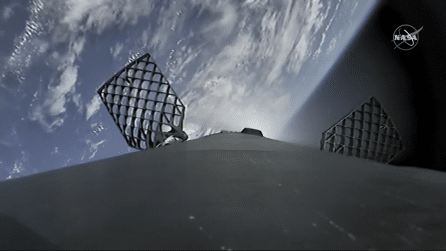
“This technology is fully automated,” explains Dr. Fossati, “That way, we can carry out our analyses from Earth and ensure that astronauts don’t have to become scientists to keep the experiment going.”
At the end of the 30 days, the cells will be frozen and sent back to Earth via the SpaceX Dragon spacecraft. The researchers will then examine if and how cells changed their structures, determine whether their genes were altered during their stay in space, and identify areas for improvement in the experimental procedures.
The researchers agree that this study would not be possible without collaboration.
“Science is a team effort, and we are lucky to have such talented, interdisciplinary groups of experts working together on this project,” says Dr. Fossati.
Read more from:
The National Stem Cell Foundation
Photo credits: NASA/Isaac Watson/Kim Shiflett/Tony Gray/Kenny Allen/Cory Huston


